Marketing is a simple and straightforward concept: you create a message about your product or service that speaks to the people you want to buy from you — and then they buy. But anyone who’s been in marketing for more than 10 minutes knows that creating these messages and making valuable connections is anything but straightforward.
More than 60% of companies say their biggest struggle is getting traffic and leads, which essentially means that they lack an effective strategy with the way they connect with their target audience and promote their business. But when you start seeing traffic and leads (and ultimately sales!) stem from your marketing efforts, you get all the confidence you need that you’re doing the right things to fuel your business.
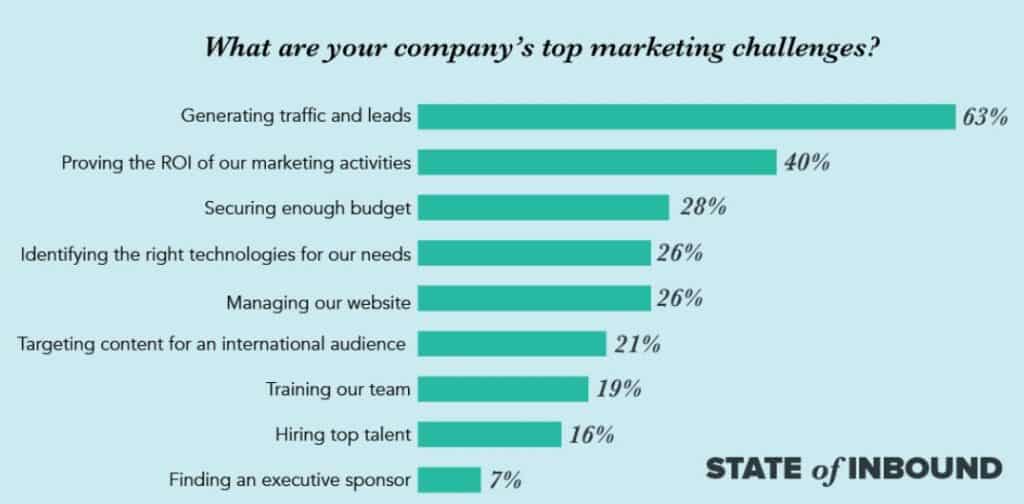
So, what should you include in your B2B marketing strategy? Let’s look at some of the most effective techniques in detail:
1. Build Your Professional Network (Online and In-Person)
While many B2B marketers are pushing for all things digital, it’s essential to remember the physical world around you. Balancing networking on and offline are key for driving quality leads and sales.
Networking is still considered one of the most powerful ways to get an “in” to a niche or company. You not only get a name, but also a source of information that can help you better understand the industry. Use these connections to dive deeper into real pain points that others in the industry might also experience. Plus, they may provide valuable introductions to other influencers that can help fuel your growth.
You can check out local business events to start meeting people, or even host your own event to get to know business owners in your area. Practice your elevator pitch, print some business cards, and focus on making authentic connections with prospects rather than trying to sell them off the bat.
If you’re not ready to step into face-to-face meetings, consider using LinkedIn to start making introductions. LinkedIn is the platform for business-to-business networking, with more than 80% of B2B leads generated on social media coming from the platform. You can search for prospects via company, job title, or industry, then send them a friendly message to introduce yourself.
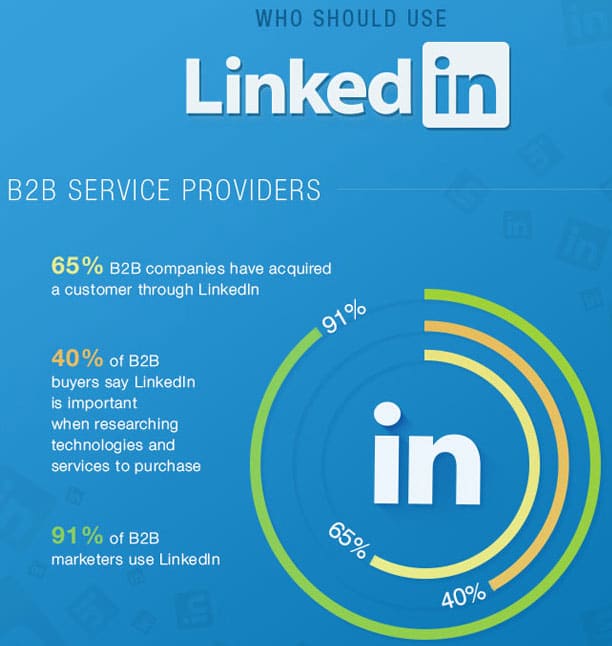
Once you start making connections with people, it’s important to leverage those connections in a way that’s mutually beneficial to both sides.
2. Invest in High Authority “Pillar” Content
Content is still king in B2B marketing, offering entrepreneurs and corporations alike to become their own publishers and highlight their expertise. But building authority takes more than publishing a few blog posts every now and then.
While blogging can be an effective strategy for SEO purposes and brand building, B2B marketing strategies can greatly benefit from making long-form, deep-dive pillar content that gives you more room to flex your creativity and prowess.
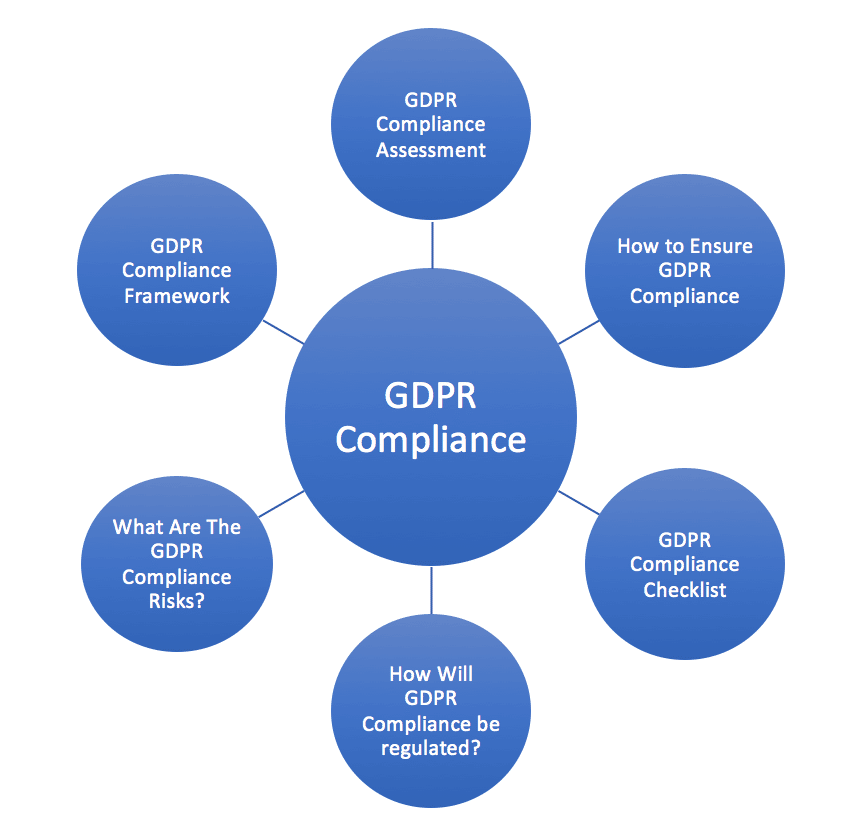
As a general rule, content helps others get to know you and your brand. They can learn a lot about your experience and skills, and even solve a particular problem that will help them in their business.
Think of pillar content as a single video, e-book, slide deck, or other content that combines several smaller topics. It’s more comprehensive, which automatically makes it look more authoritative. Plus, you pack a lot of information into it, which gives your reader plenty of insights to take away.
3. Upgrade Your Word of Mouth Marketing
Word of mouth marketing is still the most cost-effective form of marketing, with positive results to support it. Historically, word of mouth happened organically: people who enjoyed a service would go back to their family and friends and tell them about their experience. They may have encouraged others to sign up for a service or visit a business in person, and in some cases, such a referral may have been incentivized.
In 2020 (and for much of the past decade or longer), word of mouth marketing has taken on new forms. People will still talk about your brand, regardless of whether you’re part of the conversation, but you don’t have to wait for word of mouth to happen organically.
Online reviews have evolved into a word of mouth marketing tool that works at scale, 24/7. Research shows an overwhelming majority of internet users trust reviews as much as a personal recommendation from a family member or friend, while 92% rely on online reviews to inform their decision-making process.
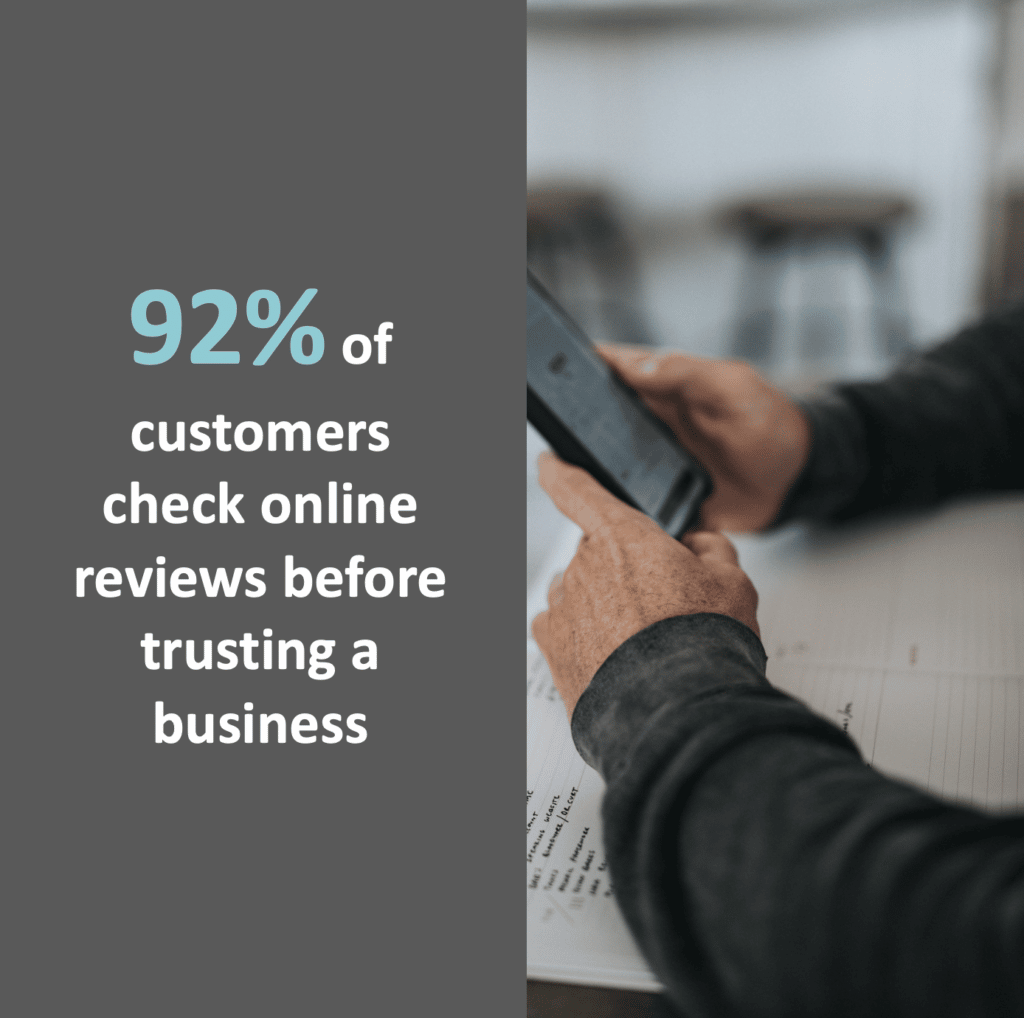
As you grow in business, you’ll organically collect reviews via Google, Facebook, or other review platforms. But if you want to capitalize on them, reach out to your audience and ask them to leave a star rating and some details about their experience. Though they might not think to do so on their own, seven out of 10 customers will be glad to leave a review if asked.
4. Empower the Email Inbox
If you’re looking for a low-cost, high-ROI B2B marketing strategy, your email inbox is one of your most powerful tools. Data shows that email can deliver up to a 4400% ROI, or $44 for every $1 spent.

To empower your email marketing strategy, you’ll first need to focus on building a solid subscriber list. There are tons of ways to generate leads, but creating lead magnets is one of the most influential strategies. Your lead magnet can be anything of value, such as an e-book, list, guide, how-to, or checklist that will help the user solve a specific problem. It must be compelling enough to get them to hand over their email address and contact information in exchange for a free peek at your content.
Once you create a lead magnet, you can promote it via its own landing page, paid social media ads, or even on your own website or blog. Once users join your email list, continue delivering high-value content that builds your image and authority. They may not be ready to commit to your product or service, but with calculated nurturing over time, you’ll be the first on their minds when they do need what you can provide.
5. Build Authority Through Speaking Events
Speaking at events (especially if you’re invited to do so instead of volunteering) is an illustrious opportunity that automatically gives you star status. It indicates you have something unique and valuable to share that will help others.
Most notably, speaking at events allows you to leverage an endorsement from a third party. It puts you in front of an audience that will relate to your product, service, or expertise. Plus, they’re already giving you their attention simply by attending the event.

Speaking at an event also allows you to present yourself in a way that doesn’t come across as pushy or threatening. Rather, you’re focused on providing essential information to others without a blatant expectation of something in return. This is your chance to truly shine in your industry and be seen as an authority on what you do best.
Granted, most business professionals also have interesting stories to share, expertise, or lessons they’ve learned the hard way. So how do you go about booking speaking events to leverage these third-party platforms?
Securing a speaking gig is hard, but good networking and marketing can help you find opportunities and form a winning pitch. Here are a few tips to put to use:
- Make it known that you’re available for speaking engagements by adding it to your website or social media profiles.
- Reach out to your professional connections to see if they have any leads.
- Identify potential events whose audience matches your ideal avatar and develop some ideas you’re qualified to speak about.
- Create a demo video to submit with your pitch.
- Offer pro bono gigs to help you get started (you can always start charging as you gain more experience).
- Keep your pitch short and sweet to increase your chances of it getting read.
Even though your main goal isn’t to sell during speaking engagements, many entrepreneurs find they get a surge in blog traffic and make valuable connections that actually turn into paying customers. Focus first on value, then build up relationships with attendees and other speakers to send your authority soaring.
6. Get Third-Party Published
When you see a business leader who has their own book or has published for high-authority websites, it’s easy to think of them as being the expert in their industry. Publishing has long been a go-to strategy for entrepreneurs and company leaders to add credibility to their name, and though the ways in which you can get published today are different than they were 20 years ago, the practice is still as powerful as ever.
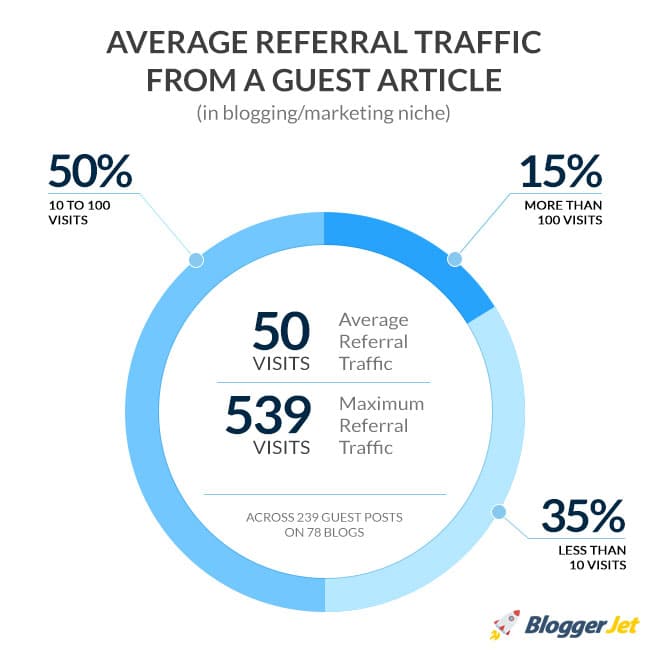
Technically, anyone these days can get published. All you need is a blog or a social media account and you can start churning out content with your name on it. But getting published on a high-traffic website like Huffington Post, New York Times, or Entrepreneur is a lot more challenging, and those who manage to do so can expect their reputation to skyrocket.
This is because it takes a lot more effort to reach out to bigger publishing outlets than it does to click Publish on your own blog. For some, it could take weeks or even months creating a pitch and waiting to hear back from an editor. In fact, you could pitch every day for a month and still come up empty-handed. So for those who do manage to infiltrate the inbox and land an opportunity to be published on a third-party site, it’s not a feat to take lightly — and your audience knows this.
Getting published means you’ve not only managed to be an expert on something, but also earned the attention of someone who isn’t a stakeholder in your business and convinced them you have something unique to share. (Side note: third-party publishing is also a valuable backlinking strategy).
You instantly become viewed as a thought leader in your industry, and people will start listening to what you have to say. Plus, your name and brand get mega exposure because you’re reaching a larger audience than what you probably have with your own blog.
If you can’t turn heads at Entrepreneur or Forbes, don’t despair. There are tons of smaller but mighty blogs that accept guest posts and pitches who still have a large enough following to help you get noticed.
Look for guest posting opportunities on websites or blogs that share your audience and focus on how you can make your pitch a win/win for you and the publisher.
7. Start a Professional Podcast or Blog
As a business professional, you should be creating and pushing your own content. This is by far one of the most straightforward and cost-effective ways to build your expertise and let others know about the knowledge and value you provide.
At its core, content marketing is a “pull” strategy that draws prospects to you, versus a “push” strategy that forces you to hunt down prospects and perform outreach (with potentially nothing to show for your efforts). Studies show that inbound marketing generates up to three times more leads AND costs about 62% less than outbound techniques.
In essence, your blog or podcast is the channel in which your audience connects with you. But as far as the content you share on these channels, there’s surprisingly a lot of overlap. You can take a blog post and use it as the foundation for a podcast episode, and vice versa.
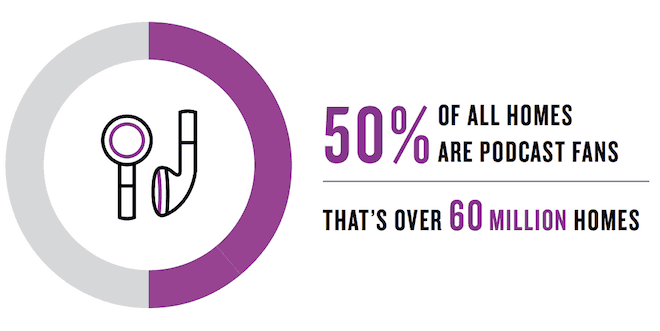
You can bring a guest to your podcast, then share the interview on your blog. You can even take it a step further by transforming your blog posts and podcasts into other useful formats, such as infographics, e-books, guides, and checklists, provided these are things that will continue to deliver value to your audience.
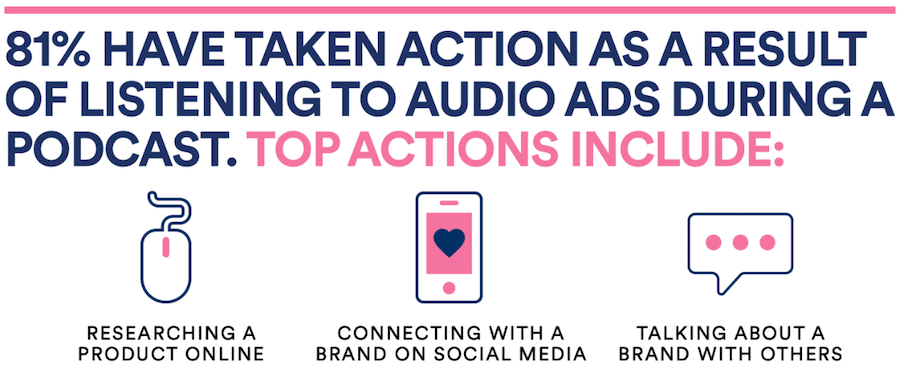
However, creating effective content on a consistent basis can be tricky. There’s a world of opportunities when it comes to content marketing, particularly in blogging and podcasting. Many B2B marketers find it hard to drive deep into the specifics because they get caught up on surface-level potential.
Quality is the most important thing to prioritize when developing content for your blog or podcast. You don’t want to waste time and money rehashing the same things that everyone else in your industry is talking about, but rather give unique insights on topics that matter to your audience. The more unique and well-branded, the better your audience will be able to connect you to the content you produce.
8. Put Your Marketing on Autopilot (To a Degree)
We’ve come a long way in terms of what marketing automation looks like, how it works, what it costs, and what it can do in lead generation. It used to be that automation tools could only be enjoyed by larger companies with deep pockets. They required a heap of technical knowledge to use and were very limited in what they could do.
Luckily, that’s no longer the case. Entrepreneurs can take advantage of the same marketing automation tools as larger companies without paying a fortune for them. They’re user-friendly and come with a huge range of functionality that can help with everything from lead nurturing to social media posting and more.
For example, you can use tools like HubSpot, Ontraport, or MailChimp to automate your email campaigns. When a lead responds to a lead magnet and enters your funnel, you can trigger an email to be sent to them immediately, and the actions they take over time will inform the future emails they receive from you.
[Read: How to Choose the Best Marketing Automation Tool]
Another option is to use lead automation tools that can help you identify your best opportunities in your sales funnel. For example, lead capture will automatically transfer leads into your CRM or database with no manual involvement from you. Lead qualification can automatically qualify leads for sales or marketing and make sure they receive the right content and touchpoints based on where they are in the buying journey.
Lead scoring is a process that assigns scores to leads based on the actions they take on your website or how they interact with your content, allowing you to see who is closer to the end of your funnel and has the best chance of converting.
You can also put your content creation on autopilot, to an extent. You can hire a freelancer to come up with an endless supply of ideas and write content on your behalf. Content outsourcing has been a game-changer for business entrepreneurs who struggle to continually produce high-quality content on a regular basis. But consistency is key when it comes to effective content marketing, so making the production process as hands-off as possible can help you stick with your strategy and gain a competitive edge.
One thing worth mentioning is that marketing automation should never be viewed as a substitute for human engagement. Rather, automation tools should complement the human element to ensure you’re making authentic, valuable connections with your audience at scale.
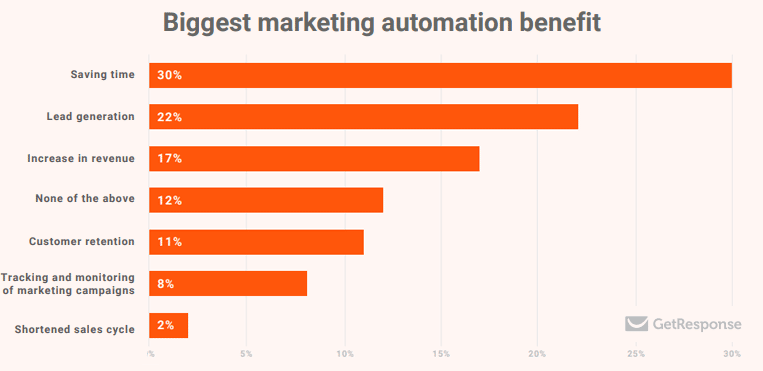
9. Invest in Paid Social Media or PPC Ads
Whether you’re promoting your content or pushing a deal or discount, social media or search engine advertising has shown a lot of promise for B2B marketers. Rather than being restricted to posting content that only your followers will see, you can pay for ads that will push your content to people within the demographics of your choosing.
If you don’t want to wait for a long-term SEO strategy to pay off, paid ads are the easiest way to bypass the rankings and land at the top of the page. And if you need a bigger incentive, data shows that Google PPC ads see an 8% average click-through rate.
Social media platforms like Facebook and YouTube are also highly effective platforms, plus you have full control over how much you spend (this isn’t the case with many traditional forms of advertising, like billboards or newspaper ads). They’re targeted to an audience who is most likely to need what you’re offering. Studies show that the typical Facebook user clicks on about 8 ads a month, and 26% of Facebook users who click on an ad end up making a purchase.
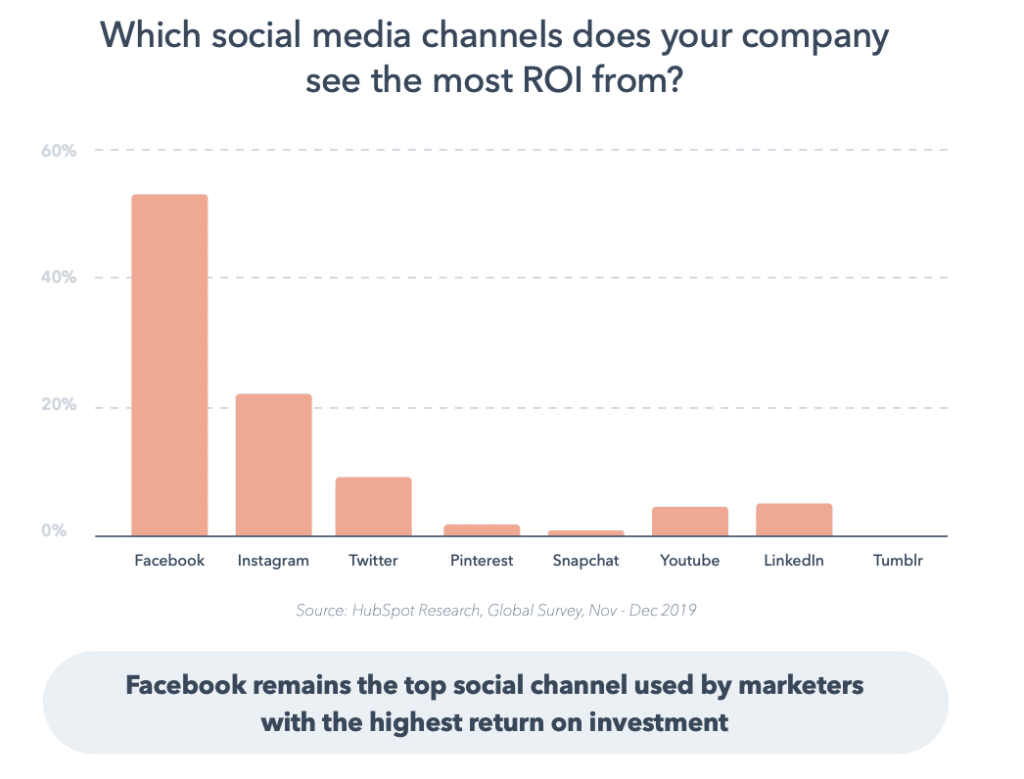
It’s also worth mentioning that paid advertising is thriving in the face of organic decline. Organic search click-through rates are in a tailspin, and organic impressions on Facebook and Linkedin have declined by as much as 90%. As a result, many businesses simply can’t afford not to run paid advertising campaigns. It’s a huge piece of their strategy that gets real results better and faster than relying on organic methods alone.
10. Focus on Retargeting
Piggybacking off of the idea of paid advertising, digital marketers have also seen great success with retargeting campaigns. Simply put, retargeting ads track users who visit your website but do not convert. As the user explores the Internet, they see ads for your product or service to encourage them to come back to your website and complete the transaction.
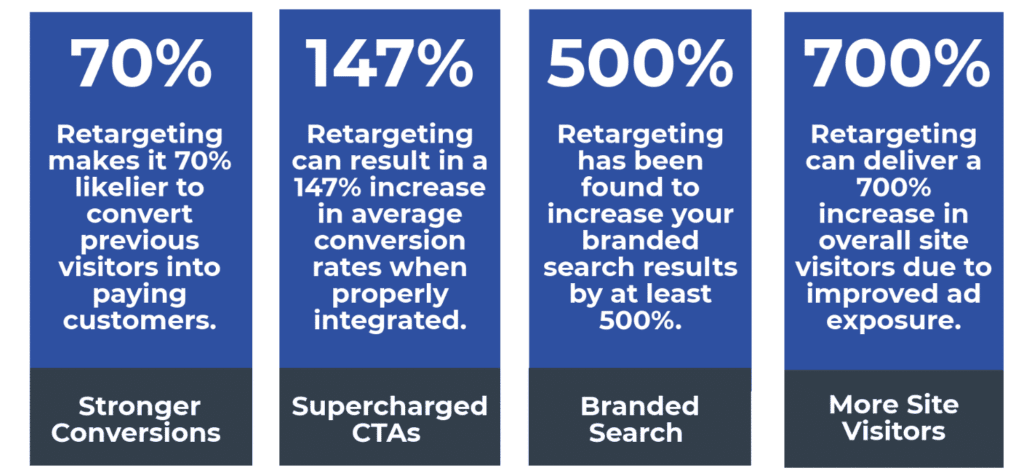
The response from internet users is quite positive: more than 60% say they notice retargeting ads, while 25% say they like this form of advertising because it helps keep a product they were interested in at the top of their mind.
Final Thoughts
B2B marketing is often synonymous with experimenting. The landscape is constantly changing, and what works well for one business may not have the same impact on another. Keep your audience in mind, track your results, and keep a firm finger on the pulse of the industry.
The more fluid you are in adapting your technique, the better prepared you’ll be to weather any shifts in your industry and continue your path to success.
Finally, know that as you ramp up and continue executing, it’ll take time to see results. I recommend pushing at least 60-90 days before you can have enough data points to make decisions on which strategies perform the best.
Here are a few related articles you should check out:






One Response